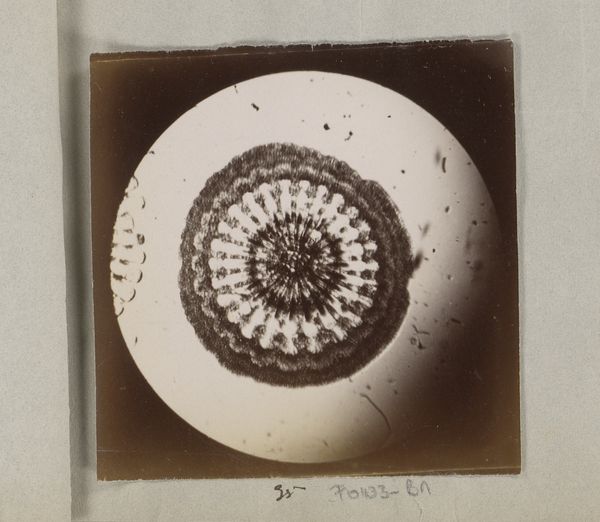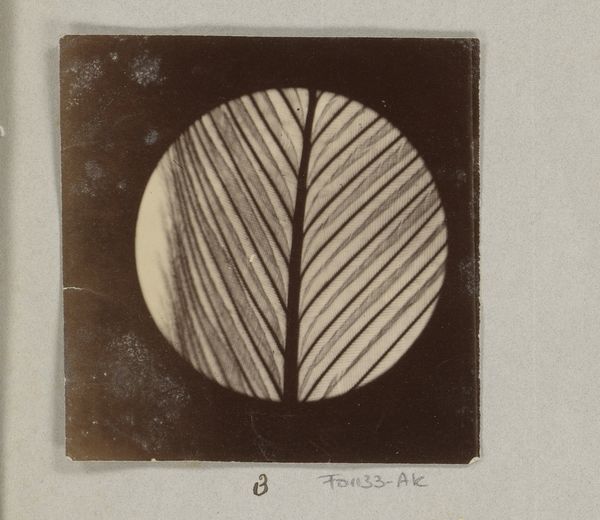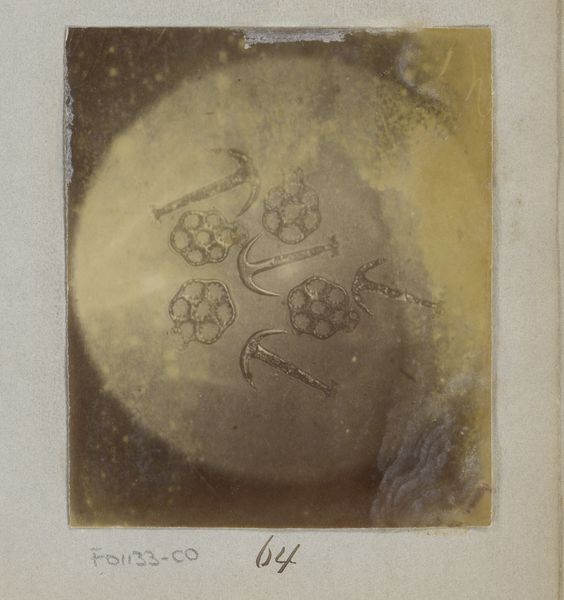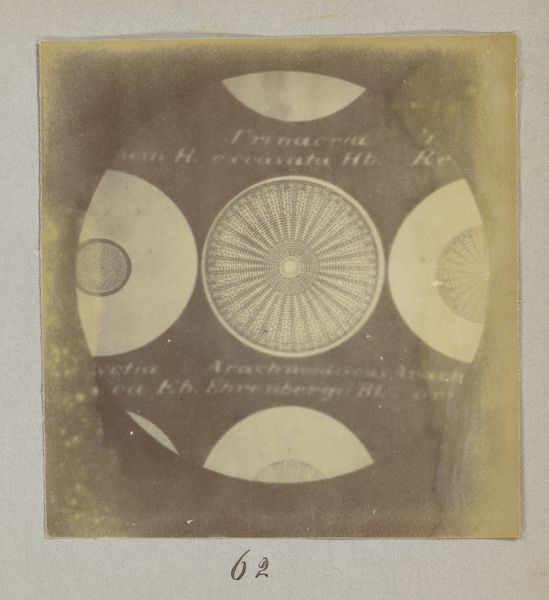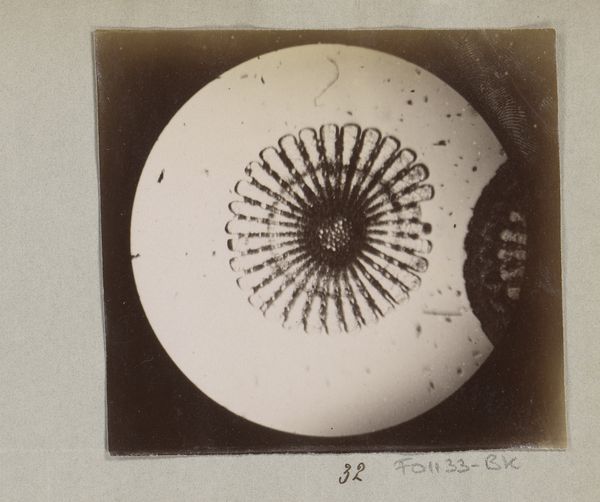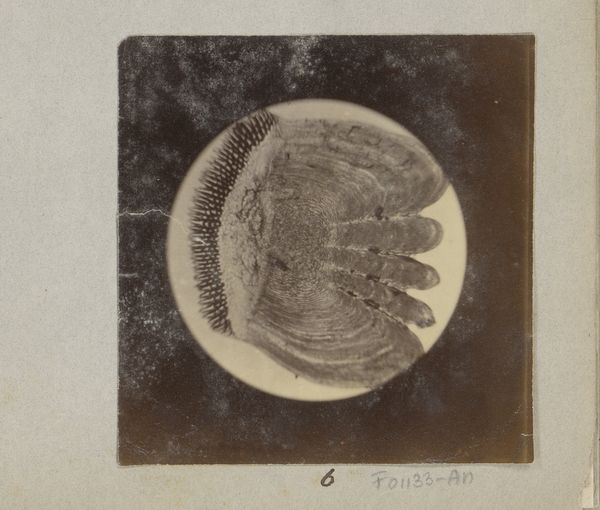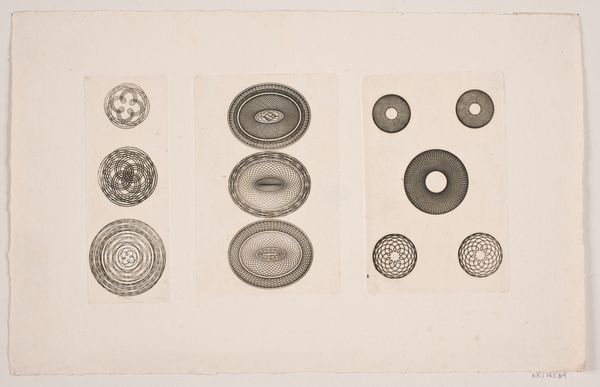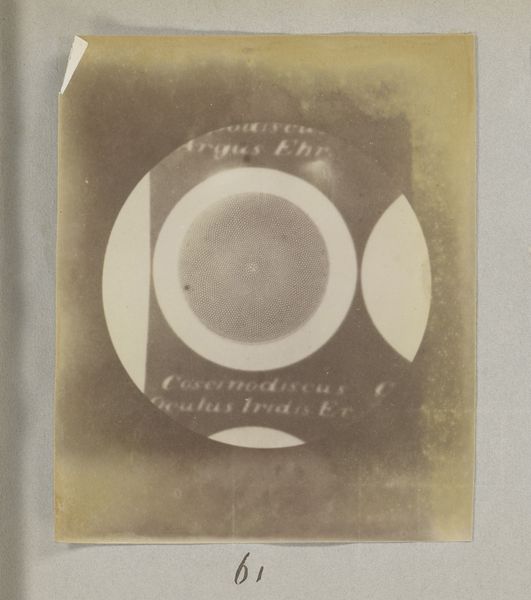
photography, gelatin-silver-print
#
still-life-photography
#
photography
#
gelatin-silver-print
#
realism
Dimensions: height 94 mm, width 110 mm
Copyright: Rijks Museum: Open Domain
Curator: Marinus Pieter Filbri's gelatin silver print, "Microscopische opname van diatomeeën, 190 keer vergroot" – a still life photography piece created between 1887 and 1888. It features these incredible close-ups of diatoms, magnified 190 times. Editor: My initial impression is one of stark geometry. Those pale, almost ghostly circles against the sepia-toned background remind me of early scientific diagrams. But also, something about the composition feels very… watchful, like a collection of stylized eyes. Curator: It is fascinating to consider the making of this photograph. The careful process of creating a gelatin silver print combined with the use of a microscope and camera. Consider the labor of producing such sharp focus with rudimentary equipment available at that time. It bridges art and scientific documentation through sheer effort. Editor: Indeed. These circles also echo cultural symbols, mandalas maybe. Concentric circles and radiating lines… Filbri's image evokes a search for wholeness. This photograph invites meditation. These humble organisms magnified force a dialogue about our place in the cosmos. Curator: But let’s not forget these diatoms are actual materials. A vital reminder is that the tools used had their limitations, so their shapes are both natural and formed in conversation with the development processes for making photographic images and optical lenses at the time. The tones themselves are results of a photochemical recipe. Editor: But the very choice to magnify the diatoms invites symbolism. By abstracting these minuscule creatures, Filbri endows them with heightened visual potency. Their circular shapes could evoke notions of cycles, growth, and interconnectedness, turning them into vessels for contemplation and speculation. Curator: Perhaps. Regardless, the labour behind each element and the materials involved demand our attention. From preparation of the gelatin silver print to the diatoms found in water samples. What began as an endeavor to illustrate soon also created new conversations about technique and the relationship with the natural sciences. Editor: Ultimately, whether we consider the photograph as a window into unseen worlds or a reflection of the artist's inner vision, it challenges us to perceive both micro and macro meanings of this beautiful artwork. Curator: And understanding the labour of creating it further highlights the artistic achievements and complexities involved when bridging art and the scientific sphere.
Comments
No comments
Be the first to comment and join the conversation on the ultimate creative platform.

